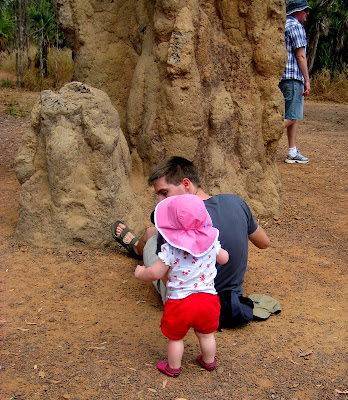Chamber pots are, in
my world, a vanished Thing. A THing with
a capital TH, spoken of with hushed tones and curled lips and surreptitious glaaahs and gaaaks by
people of my mother's generation.
Mum glaaahs and Dad
is smug. He might have had an outdoor
dunny when he was a nipper, but it was a flushing model, in a shed with
electric lights, even. My city-girl Mum
gaaaks and says that she spent her summer holidays in country-er towns than the
one he came from - towns where the dunnykin man came once a week in a
horse-drawn cart, trailing a boiling cloud of black flies behind.
HER dunny was a
dunnykin - a glorified milk bucket in reverse, under a hole in a wooden
seat. A new one was delivered every
Monday. By Wednesday it was unspeakable
in the boiling Aussie summer, by Thursday it was crawling, and by Sunday night
it was crawling an inch up underneath your bum.
The dunnykin man
worked in dark and secrecy - by broad daylight.
On delivery day, Nice People huddled in their living rooms and were
ostentatiously Not There as he stealthily carried the noisesome gong bucket
down the garden path to where the horses stood, and stamped, and trailed a
boiling cloud of black flies behind them, all new hatched and rising straight
up out of the muck.
Chamber Pots are
unlamented, unmourned, unremembered and unknown to me and mine. Last year, just before we left Australia, I
fount two elegantly enameled tin basins in a thrift store. They were teal and celadon blue, and I
brought them home to put flowers in - a la Martha Stewart - at a tea party.
We never held the
tea party, on account of packing up the house to move to Chile instead, but my
Mother visited me last week and I held one here in her honor, and brought out
the new flower pots to decorate the tea-table.
Mum screamed.
"Chamber
Pots!" She shrieked.
After a brief moment
of dismay, I giggled.
"No one will know." I said. "I didn't. And Martha Stewart would call it Retro-rust-pan Chic!"
"No one will know." I said. "I didn't. And Martha Stewart would call it Retro-rust-pan Chic!"
Mum glaaah'd. AND gaaak'd.
But nobody knew. And Martha
Stewart would have smiled, enigmatically, and cut me a bunch of roses.





















